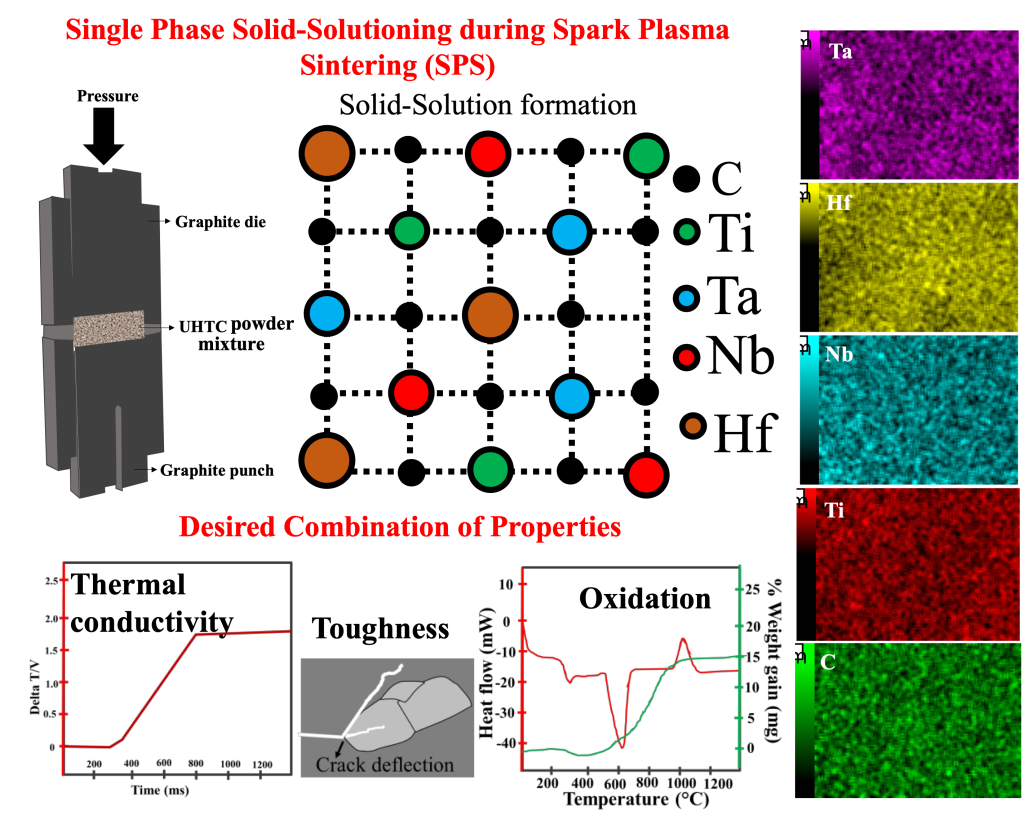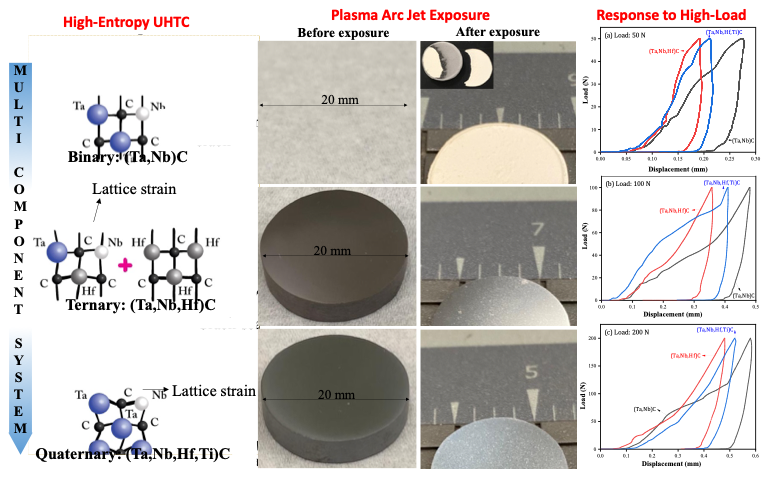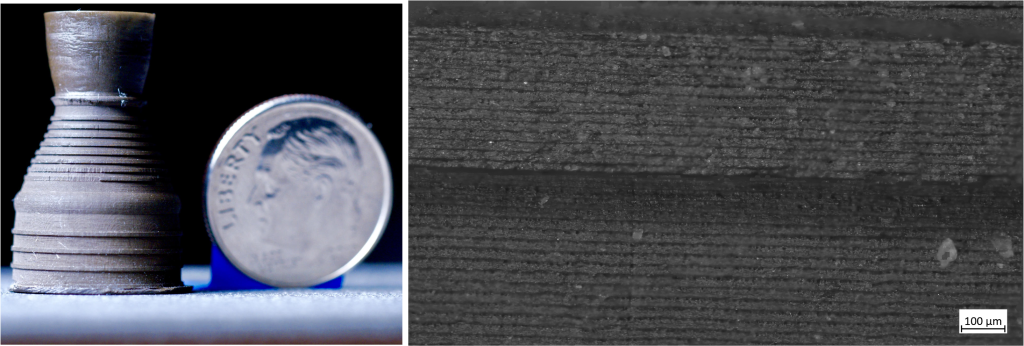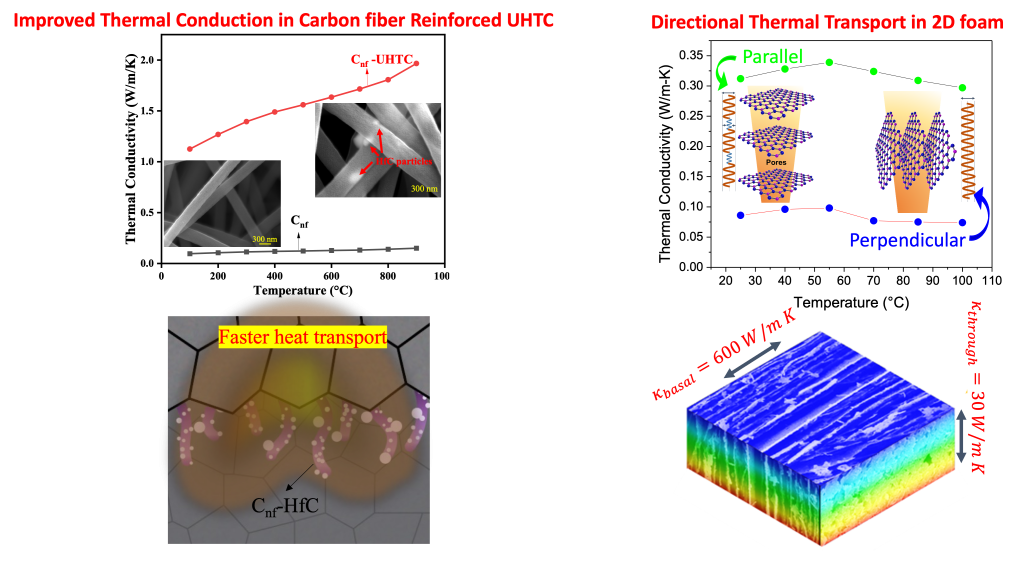Thermal Conductivity of Materials
The Thermal Conductivity of the Cnf and HfC decorated Cnf as a function of temperature is compared in Fig. 1. The thermal conductivity varies from 0.096 to 0.15 W/m/K for Cnf and 1.13– 1.97 W/m/K for HfC decorated Cnf in the temperature range of 100–900 °C. There is a remarkable improvement, up to 20-fold, in the thermal conductivity of HfC decorated Cnf compared to Cnf. This has been attributed to the intrinsically high lattice thermal conductivity of HfC ceramic. As per Wiedmann-Franz’s law, the thermal conductivity of HfC increases with temperature due to its high concentration of conduction electrons. The remarkably improved thermal conductivity of HfC decorated Cnf mats can prevent thermal damage by effectively dissipating the environment’s heat, making it a viable candidate for TPS.



The Thermal Conductivity of the Cnf and HfC decorated Cnf as a function of temperature is compared in Fig. 1. The thermal conductivity varies from 0.096 to 0.15 W/m/K for Cnf and 1.13– 1.97 W/m/K for HfC decorated Cnf in the temperature range of 100–900 °C. There is a remarkable improvement, up to 20-fold, in the thermal conductivity of HfC decorated Cnf compared to Cnf. This has been attributed to the intrinsically high lattice thermal conductivity of HfC ceramic. As per Wiedmann-Franz’s law, the thermal conductivity of HfC increases with temperature due to its high concentration of conduction electrons. The remarkably improved thermal conductivity of HfC decorated Cnf mats can prevent thermal damage by effectively dissipating the environment’s heat, making it a viable candidate for TPS.

